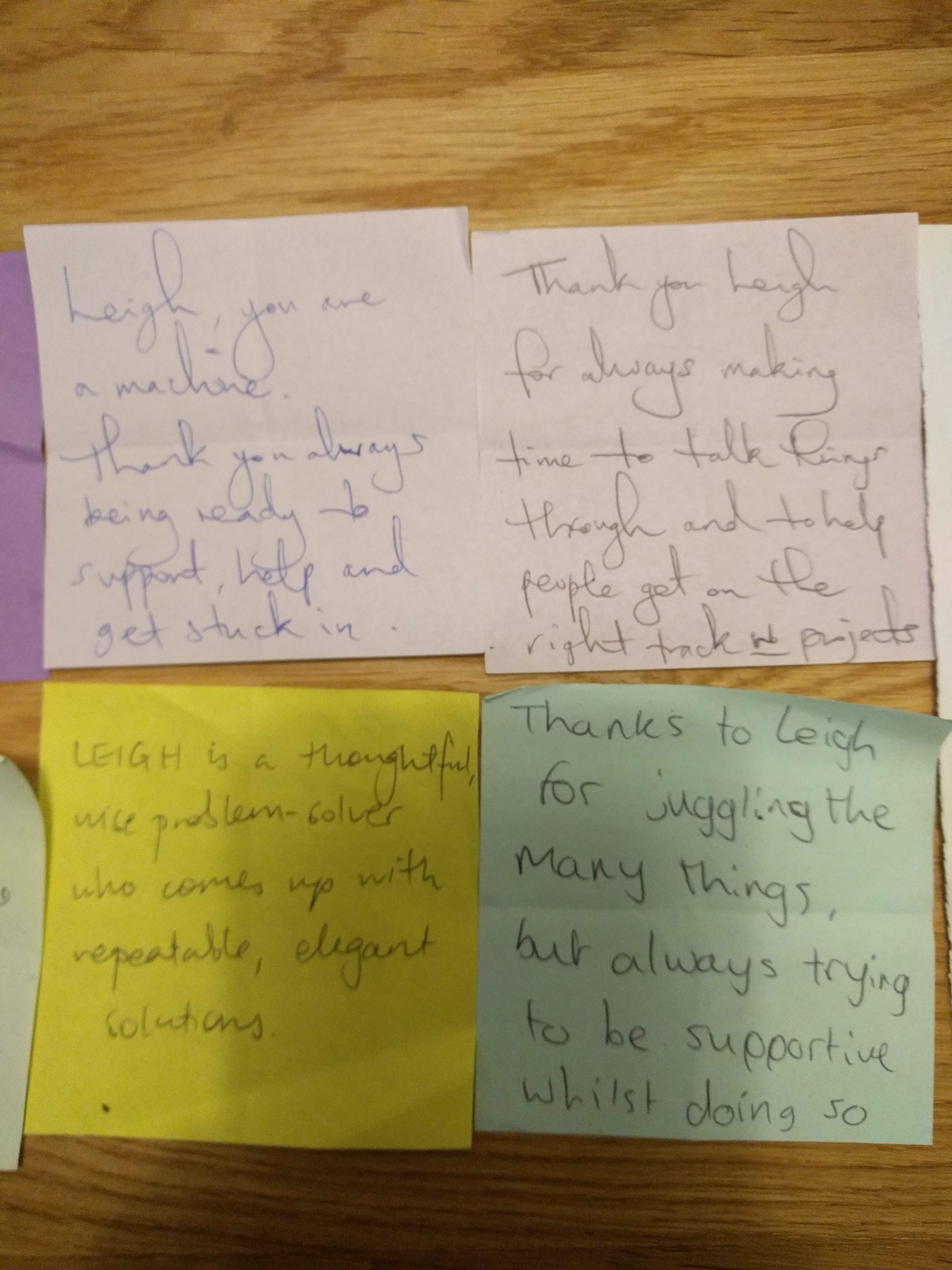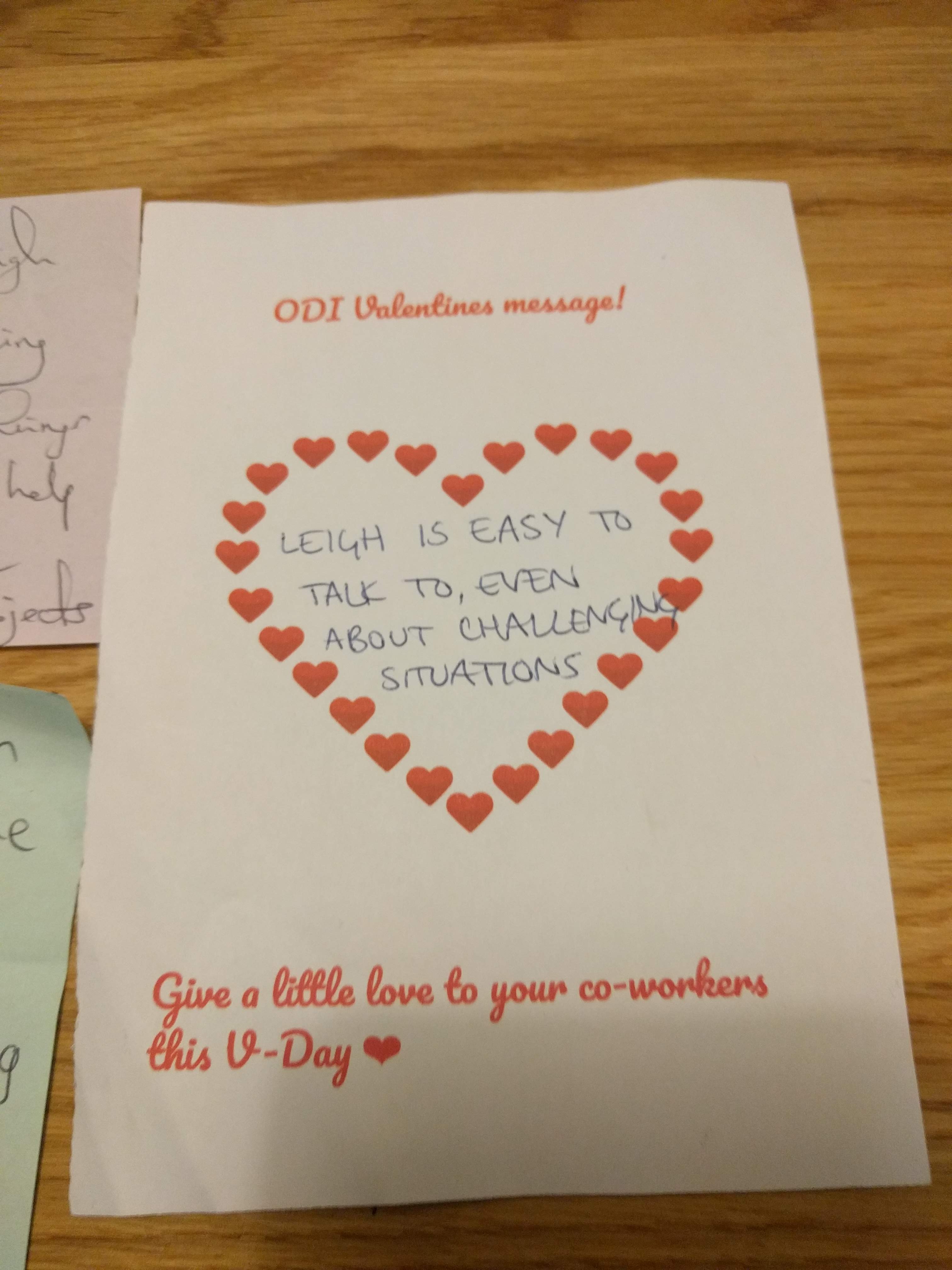I’ve been in a reflective mood over the past few weeks as I wrap up my time at the Open Data Institute. One of the little rituals I will miss is the “Saybox”. I thought I’d briefly write it up and explain why I like it.
I can’t remember who originally introduced the idea. It’s been around long enough that I think I was still only working part-time as an associate, so wasn’t always at every team event. But I have a suspicion it was Briony. Maybe someone can correct me on that? (Update: it was Briony 🙂 )
It’s also possible that the idea is well-known and documented elsewhere, but I couldn’t find a good reference. So again, if someone has a pointer, then let me know and I’ll update this post.
Originally, the Saybox was just a decorated shoebox. It had strong school craft project vibes. I’m sad that I can’t find a picture of it
The idea is that anyone in the team can drop an anonymous post-it into the box with a bit of appreciation for another member of the team, questions for the leadership team, a joke or a “did you know”. At our regular team meetings we open the box, pass it around and we all read out a few of the post-its.
I’ll admit that it took me a while to warm to the idea. But it didn’t take me long to be won over.
The Saybox has became part of the team culture. A regular source of recognition for individual team members, warm welcomes for new hires and, at times, a safe way to surface difficult questions. The team have used it to troll each other whilst on holiday and it became a source of running gags. For a time, no Saybox session was complete without a reminder that Simon Bullmore ran a marathon.
As I took on leadership positions in the team, I came to appreciate it for other reasons. It was more than just a means of providing and encouraging feedback across the team. It became a source of prompts for where more clarity on plans or strategy were needed. And, in a very busy setting, it also helped to reinforce how delivery really is a team sport.
There’s nothing like hearing an outpouring of appreciation for a individual or small team to be constantly reminded of the important role they play.
Like any aspect of team culture, the Saybox has evolved over time.
There’s a bit less trolling and fewer running gags now. But the appreciation is still strong.
The shoebox was also eventually replaced by a tidy wooden box. This was never quite the same for me. The shoebox had more of a scruffy, team-owned vibe about it.
As we’ve moved to remote working we’ve adapted the idea. We now use post-it notes on a Jamboard, and take turns reading them over the team zooms. Dr Dave likes to tick them off as we go, helping to orchestrate the reading.
The move to online unfortunately means there isn’t the same constant reminder to provide feedback, in the way that a physical box presents. You don’t just walk past a Jamboard on your way to or from a meeting. This means that the Saybox jamboard is now typically “filled” just before or during the team meetings, which can change the nature of the feedback it contains.
It’s obviously difficult to adapt team practices to virtual settings. But I’m glad the ODI has kept it going.
I’ll end this post with a brief confession. It might help reinforce why rituals like this are so important.
In a Saybox session, when we used to do them in person with actual paper, we handed the note over to whoever it was about. So sometimes you could leave a team meeting with one or more notes of appreciation from the team. That’s a lovely feeling.
I got into the habit of dropping them into my bag or sticking them into my notebook. As I tidied up my bag or had a clearout of old paperwork, I started collecting the notes into an envelope.
The other day I found that envelope in a drawer. As someone who is wired to always look for the negatives in any feedback, having these hand-written notes is lovely.
There’s nothing like reading unprompted bits of positive feedback, collected over about 5 years or so, to help you reflect on your strengths.



Thanks everyone.